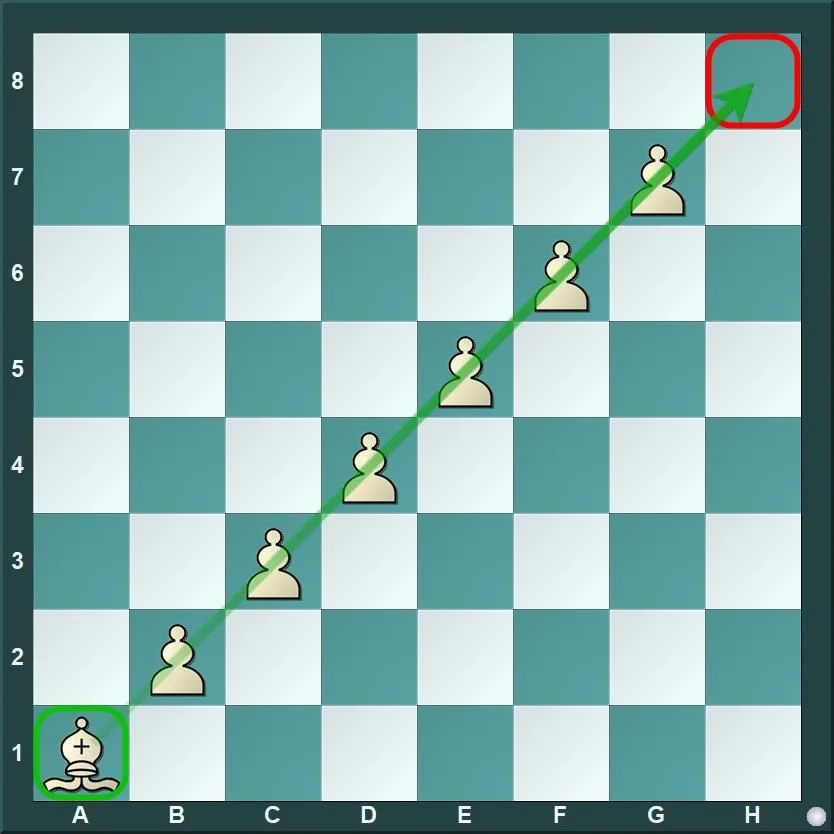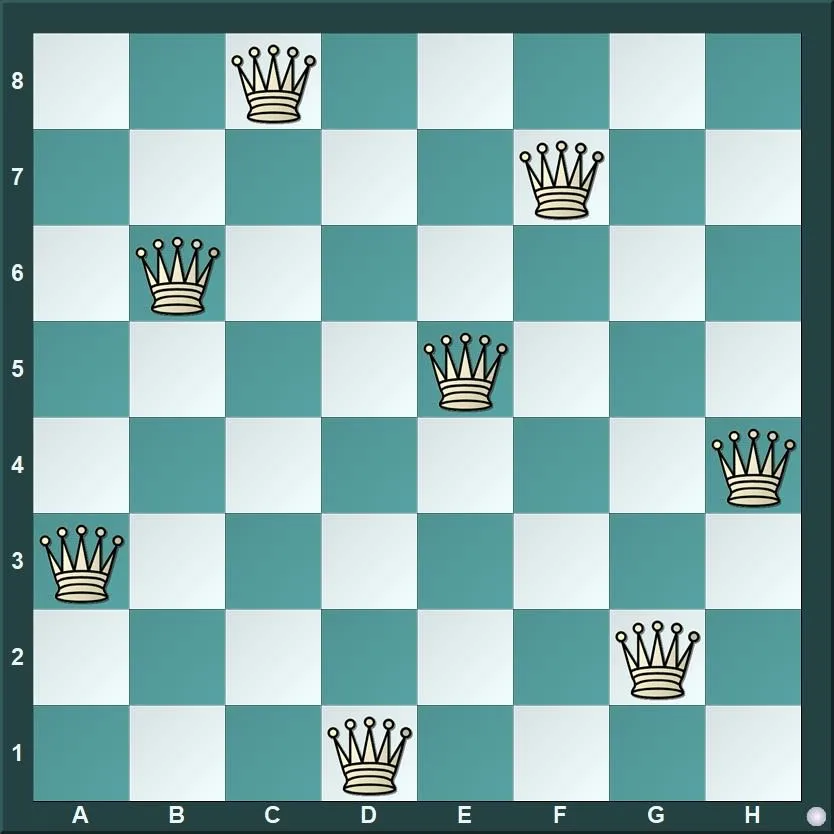Chess is often seen as a tool to aid rational thinking and logical reasoning. The game itself incorporates various mathematical concepts such as counting (a clear example is evaluating a ‘Pawn Race’ in King-pawn endings), probability (the chances of our opponent choosing a certain move amongst various legal moves available), geometry (pieces work diagonally, horizontally and vertically) while each game mirrors a debate where either side truly believes in their respective judgement of the position and strategizes accordingly.
A popular math-oriented chess puzzle goes as follows: How do you place 8 Queens on an empty Chess board in a way that none of the Queens attack each other?
Solving such puzzles is not only a fun exercise but will enhance your understanding of the game.
Visualisation exercises
-
Empty the Board and Close your eyes. Now call out a square aloud by its notation and guess the colour of that square.
For example, what is the colour of the square d4? Black! That’s right. What about b7? f5? Open your eyes and check your response.
This exercise will help you improve your overall board vision.
-
Empty the Board except for the pawn on a2. Notice the squares controlled by the pawn at the moment. Now move the pawn ahead by one square, and notice which squares the pawn does not control any more, and which new squares it does. Do this until the pawn reaches a8. Reset, add one more pawn on b2, and continue the exercise with the ‘b’ pawn. One by one, add all the pawns on the board.
This exercise will help you understand square control and the importance of making or limiting pawn moves.
Some puzzles explain the value, function, strengths and interpersonal equation of the pieces such as the ones below:
-
The Knight’s Journey: What is the minimum number of moves a Knight requires to reach from a1 to h8 on an empty board?
Solution: 6. Let’s Check: 1. Nc2 2.Ne3 3.Nf5 4.Ne7 5.Ng6 6.Nh8! Are there other 6-move routes too?
What about the Bishop’s journey from a1 to h8? The Bishop reaches h8 in 1 move with 1.Bh8!
This puzzle demonstrates why a Knight is strongest when centralised while a Bishop may function equally well from the side! However, the Knight has another quality which could compensate for its shorter range compared to the Bishop. Let us add more characters to the above puzzle.
-
1.1.Placing the White Knight on a1 on an otherwise empty Chess Board, let us add White Pawns on b2, c3, d4, e5, f6 and g7. How many moves does it take the a1 Knight to reach h8 this time? How many moves will a Bishop require?

Solution: In the case of a Knight, the answer remains 6. The Bishop however takes 7 moves this time.
The Bishop’s path was blocked by its own pawns so it took longer than the Knight which can simply jump over the pawns!
-
1.2.What if the pawns were on b3,c4,d5,e6, f7 and g6 instead in the above puzzle?
Solution: A Bishop on a1 would reach the h8 square on 1 move this time, while the Knight takes 7 moves now.
The Bishop gets restricted behind pawns placed on squares of the same colour but is left unhindered when the pawns are placed on the opposite colour. This explains terms such as ‘Good Bishop’ and ‘Bad Bishop’, often used to describe the character of a Bishop during the game. On the other hand, have you noticed how the Knight always controls the square of the colour opposite to the square it is placed? Even though the pawns do not hinder the Knight’s movement, when placed on light squares, that too f7 and g6 in particular, they restrict it’s path.
When Chess meets Math and Logic
-
The Eight Queen problem: Place 8 Queens on an empty board in such a way that none of the Queens attack each other.
This puzzle is a special case of the more general n queens problem of placing n non-attacking queens on an n×n chessboard. This one has 12 fundamental solutions that can extend up to 62 thanks to the concept of rotation and reflection.

This is the solution I found (albeit after stumbling a few times) while thinking about this puzzle for the article!
Is your solution different? After all there are 11 more solutions! Pondering on these type of puzzles can assist you with spotting hanging pieces and avoiding blunders in your upcoming games.
Here’s something for you to think about: What is the maximum number of Rooks that can be placed on an empty Board without either of them attacking one another? What about Kings? Knights? Bishops?
We will publish the answers in the next article. Have fun!
(Soumya Swaminathan is an International Master and Woman Grandmaster in Chess. She has been World Junior Champion and Commonwealth Gold Medalist)

